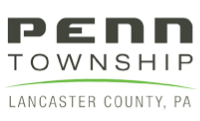General Information
Despite being an essential part of life, water has caused property damage and the loss of life during some storm events. Historically, settlements desired to be close to streams and rivers for transportation, commerce, and manufacturing purposes. But as flood events destroyed buildings located too close to waterways, measures were taken to limit damage and injury.
Flooding from hurricanes and tropical storms have devastated many communities in central and eastern Pennsylvania and left countless families and businesses facing unbelievable destruction. If you or someone you know has been impacted by the devastating flooding, this document will provide you with the information and resources you need to safely begin recovering from this tragedy.
Post-Flooding_Info_and_Resources
Disposal Flood Debris
https://www.dep.pa.gov/Citizens/My-Water/PrivateWells/Pages/Stream-Maintenance.aspx
National Flood Insurance Program
In the early 20th century, levees and other similar flood control measures were used to keep floodwater contained (a local example of a levee can be found in Marietta Borough), especially on large water bodies like the Ohio and Mississippi Rivers. For a variety of reasons, the approach was broadened in the mid-20th century through the concept of floodplain management. Ultimately, the National Flood Insurance Program (NFIP) was established in 1968 as a voluntary program in which communities could establish eligibility for the sake of their property owners.
Floodplain
 Floodplain is defined in the Penn Township Zoning Ordinance as:
Floodplain is defined in the Penn Township Zoning Ordinance as:
“a relatively flat or low land area which is subject to partial or complete inundation from an adjoining or nearby stream, river or watercourse; and/or any area subject to the unusual and rapid accumulation of surface waters from any source”.
Flood Mapping
Floodplain mapping efforts were widespread in the 1970’s for the NFIP, resulting in the Flood Insurance Rate Maps (FIRMs) that help us identify certain flood-prone areas. In Penn Township, only the Chiques Creek and parts of Doe Run and the Santo Domingo Creek are delineated on the FIRMs. But in actuality, many other streams have unmapped flood hazard areas.
Penn Township regulates flood-prone areas through the Zoning Ordinance, specifically in Section 27-214, the Floodplain District. Because these provisions are consistent with the NFIP, residents in mapped floodplains are eligible for flood insurance through the program. Since the floodplains mapped on the FIRMs are not extensive, the township’s Floodplain District also includes the low areas adjoining and including waterways or drainage courses throughout the municipality. Engineering studies may be needed to determine the exact boundaries, depending on the proposed activity near a waterway.
There is a strong connection between effective stormwater management and flood control. As more impervious surfaces are created, and especially concentrated in developing areas, facilities must be provided to ensure that the increased volume of runoff does not contribute to flood conditions of waterways. This also includes not overwhelming public storm sewers, which are designed to remove runoff from roadways and sidewalks rather than individual properties’ stormwater.

You must be logged in to post a comment.